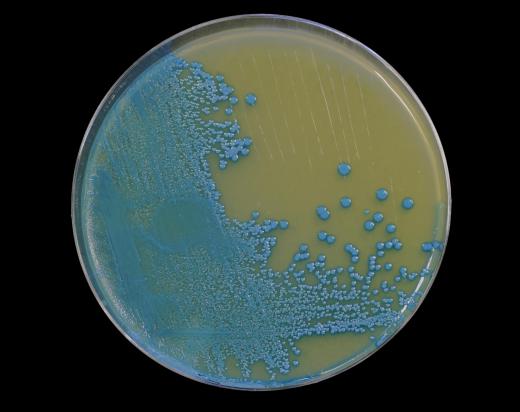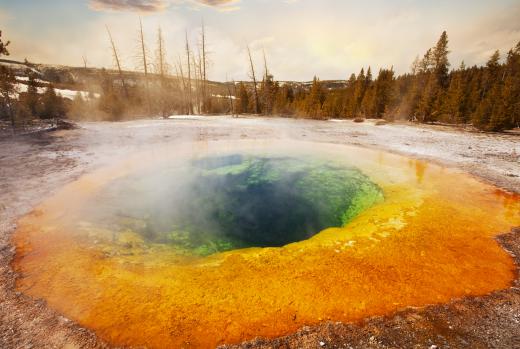What are Some Properties of Bacteria?
 Michael Anissimov
Michael Anissimov
Bacteria are microbes, typically 0.0000196 to 0.00019 inches (0.5 to 5.0 micrometers) in length, that can be found in huge numbers throughout every part of the environment, from at least 2 miles (3.2 km) underground to 7 miles (11.2 km) above the Earth's surface. They colonize areas uninhabitable to most other forms of life, including Yellowstone hot springs and the McMurdo Dry Valleys of Antarctica.
Human beings also have huge numbers of bacteria in and on their bodies. It is estimated there are about ten bacteria for every cell in the human body, for a total of approximately 1 quadrillion (1015) microbes, distributed among 500 to 100,000 species. The vast majority live in the large intestine, although they can be found throughout the body. Some of the bacteria in the body are good, like Lactobacillus, which converts milk protein to lactic acid in the gut, and some are bad, like those responsible for tooth decay and stomach ulcers.

Bacteria are found in fertile soil in huge amounts: around 100 million to 3 billion per 0.035 ounce (1 gram) of soil, sometimes with up to a million species in that small sample. Although a typical soil sample is dominated by only a few species, there are a large number present but in low abundance. They help other organisms to break down organic detritus, creating rich soil. In particular, bacteria are the only form of life capable of converting atmospheric nitrogen into fixed (solid) nitrogen, in the form of nitrates that are then used by plants as nutrients.

If there is organic material present or even, in some cases, inorganic reduced compounds, then bacteria, in cooperation with other microorganisms, will likely find some way to digest it. There are species that consume bits of tire on the side of the road, dissolve Alzheimer plaques in corpses, and even consume TNT or sulfate minerals. The use of bacteria or other microbes to break down toxic chemicals is called bioremediation.
AS FEATURED ON:
AS FEATURED ON:













Discussion Comments
There are three kinds of bacteria based on their shape, coccus (round) bacillus (rod like), and spirilla, (spiral).
Post your comments